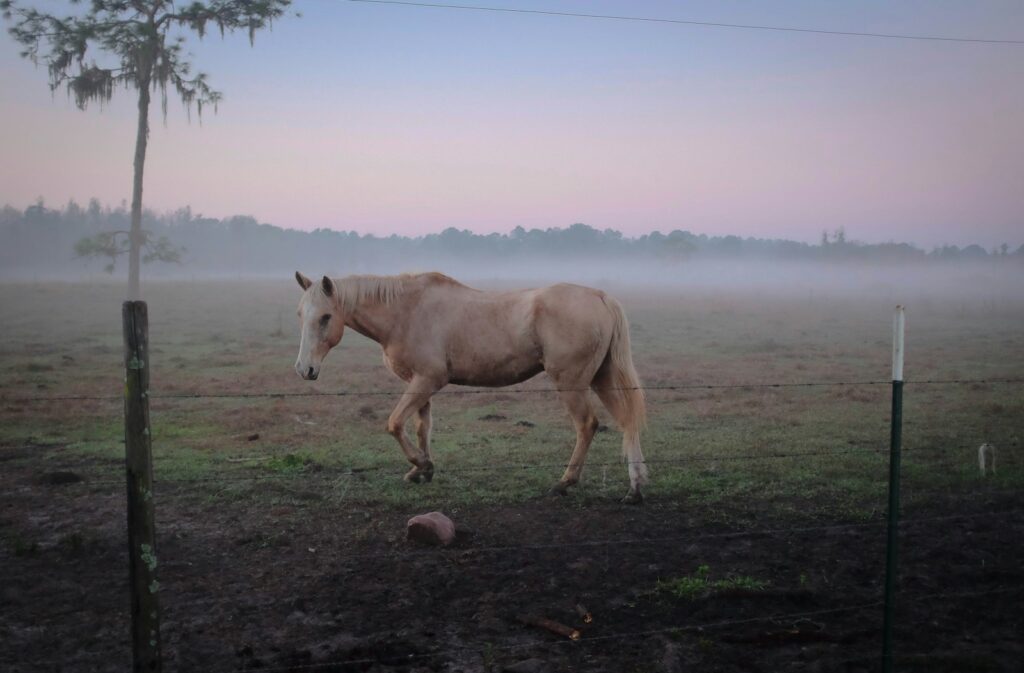The mustang—with mane flowing in the wind, hooves thundering across the open plains, and an untamed heart beating in rhythm with the wilderness—stands as a powerful living symbol of American freedom and resilience. These majestic wild horses embody the very essence of the American West, representing independence, survival, and the untamed beauty of the frontier. Their story is interwoven with the landscape they inhabit, the history they’ve witnessed, and the cultural significance they’ve acquired over centuries. From their Spanish origins to their current status as protected icons of western heritage, mustangs continue to capture our imagination and remind us of a wilder, more unbridled chapter in American history.
Origins of the American Mustang

The story of mustangs in North America begins not as native wildlife but as an introduced species with a complicated history. These horses descended from domesticated horses brought to the Americas by Spanish explorers in the 16th century, particularly following the expeditions of conquistadors like Hernán Cortés in 1519. When these early colonial horses escaped or were released, they adapted to the wild landscape, forming free-roaming herds that would eventually populate the western plains. Over generations, natural selection shaped these horses into the hardy, resilient animals we now recognize as mustangs—a name derived from the Spanish word “mesteño” or “mostrenco,” meaning wild or masterless. This transformation from domestic stock to wild herds occurred over just a few centuries, representing one of the most successful large mammal reintroductions in recorded history.
Physical Adaptations for Survival
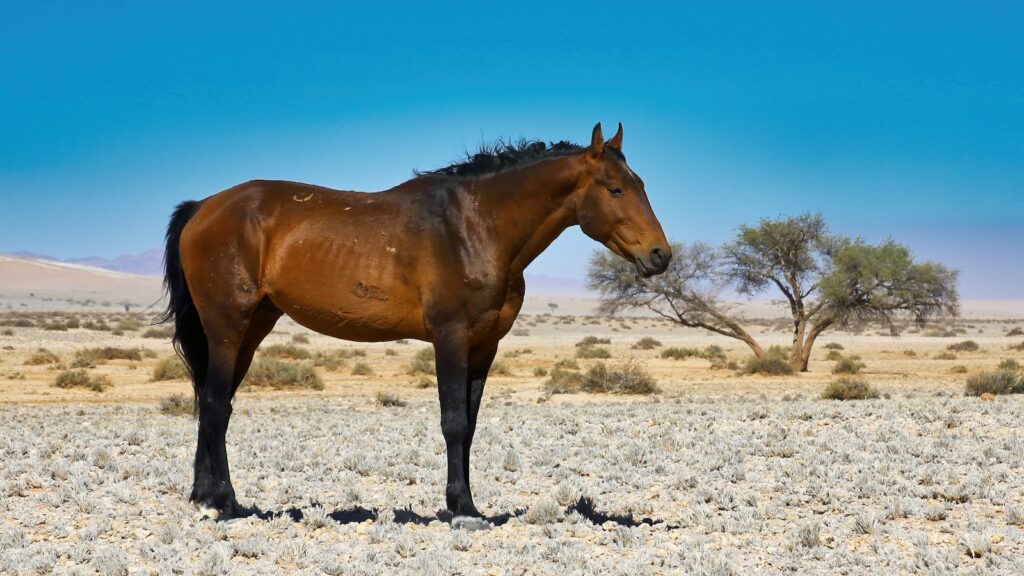
Mustangs have developed remarkable physical characteristics that enable their survival in harsh western environments. Their bodies are compact and muscular with exceptional endurance capacity, allowing them to travel up to 20 miles daily in search of resources. Unlike pampered domestic breeds, mustangs develop exceptionally hard hooves that rarely require human intervention, perfectly adapted to navigate rocky terrain without horseshoes. Their digestive systems have evolved to process marginal vegetation, including coarse grasses, sagebrush, and other plants that domestic horses might refuse. Perhaps most visibly distinct is their weather resistance—mustangs grow thick, shaggy winter coats and possess a layer of fat that insulates against temperatures that can plunge well below freezing in western winters, demonstrating nature’s remarkable ability to refine these animals into perfect survivors.
The Social Structure of Wild Mustang Herds
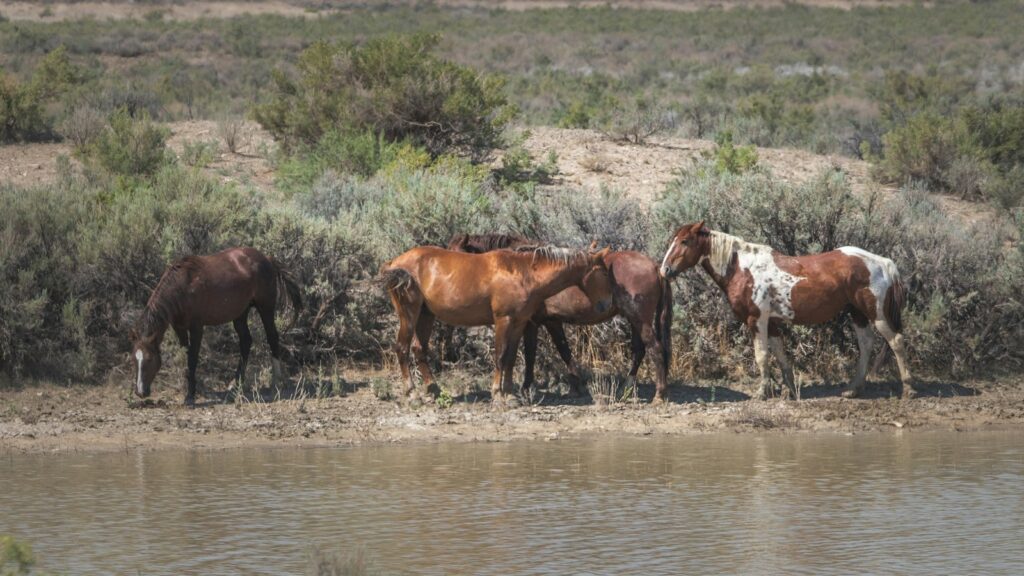
Wild mustang herds maintain a fascinating and complex social organization that has evolved to maximize survival in challenging landscapes. Each band typically consists of a dominant stallion, several mares, and their offspring, creating family units that can remain together for years or even decades. The lead stallion serves as both protector and breeding partner, frequently positioning himself between potential threats and his family while driving away competing males. Mare hierarchies within the band create an additional social structure, with older, experienced females often making crucial decisions about migration routes and feeding grounds. Young stallions unable to establish their own bands often form “bachelor bands” where they develop the fighting and survival skills necessary to eventually challenge for mares. This intricately balanced social system demonstrates remarkable evolutionary adaptation, allowing mustangs to persist where individual horses would certainly perish.
Historical Impact on Native American Cultures
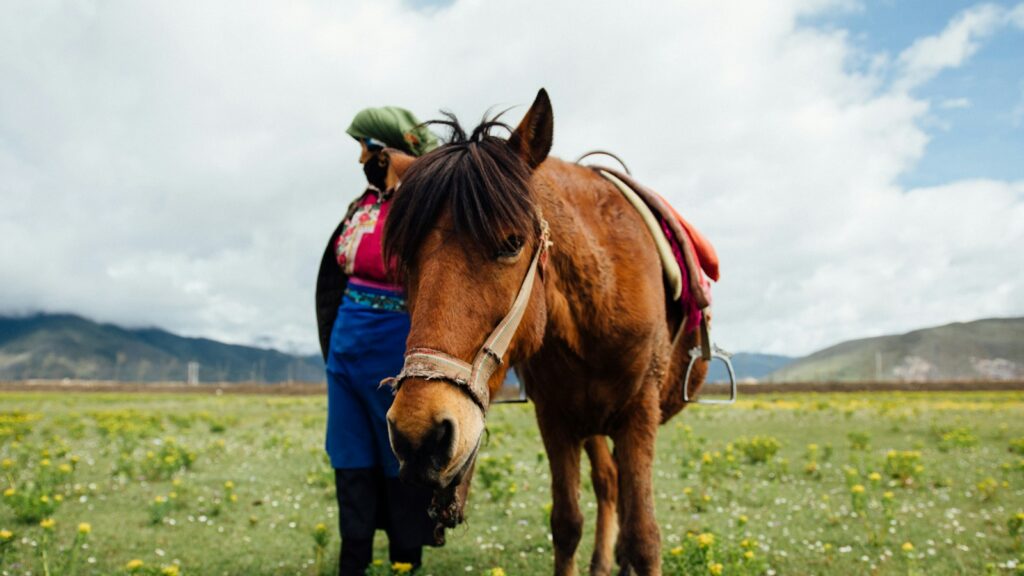
The reintroduction of horses to North America through Spanish colonization revolutionized Native American cultures, particularly those of the Great Plains. Tribes such as the Comanche, Lakota, and Blackfoot transformed from predominantly pedestrian hunters into formidable mounted warriors and more efficient buffalo hunters within just a few generations. The horse became not only a practical tool but also a spiritual and cultural centerpiece, with many tribes developing complex ceremonies, songs, and art centered around these animals. Native horsemanship techniques evolved into sophisticated systems that often surpassed European methods, with riders developing remarkable skills including shooting arrows with deadly accuracy at full gallop. The relationship between Native peoples and mustangs represents one of history’s most significant technological and cultural adaptations, fundamentally altering tribal territories, warfare, trade networks, and social structures across the American West.
Role in Western Expansion and Settlement

Mustangs played an indispensable role in the westward expansion of European-American settlers, serving as the primary mode of transportation, draft animals, and war mounts during the 19th century. These horses, often captured and tamed from wild herds, carried pioneers across vast distances where railroads had not yet reached, pulled wagons laden with supplies over mountain passes, and enabled rapid communication through Pony Express riders who could cover 75-100 miles per day by switching between multiple mounts. Military campaigns throughout the West depended heavily on cavalry units mounted primarily on mustangs, whose legendary endurance and surefootedness proved superior to eastern-bred horses in the challenging western terrain. The relationship became so symbiotic that western expansion would have progressed at a dramatically slower pace without these animals, effectively making mustangs both witnesses to and participants in the dramatic transformation of the American frontier.
The Great Western Rangelands: Home of the Mustang

The American mustang is inextricably linked to the vast western rangelands that serve as their natural habitat, spanning millions of acres across states including Nevada, Wyoming, Montana, and Oregon. These diverse landscapes range from high desert plateaus dotted with sagebrush to rugged mountain foothills, creating a mosaic of ecosystems united by their aridity and expansiveness. Within these habitats, mustangs have adapted to seasonal changes, developing migration patterns that follow available water and vegetation throughout the year. The Bureau of Land Management currently manages over 26.9 million acres specifically designated as wild horse and burro herd management areas, though this represents only a fraction of the territory mustangs historically roamed. These iconic western landscapes, with their dramatic vistas and challenging conditions, have shaped the mustang’s evolution while simultaneously being shaped by their presence, creating an ecological relationship spanning centuries where the land and horse have become defining elements of each other’s existence.
Cultural Symbolism and American Identity
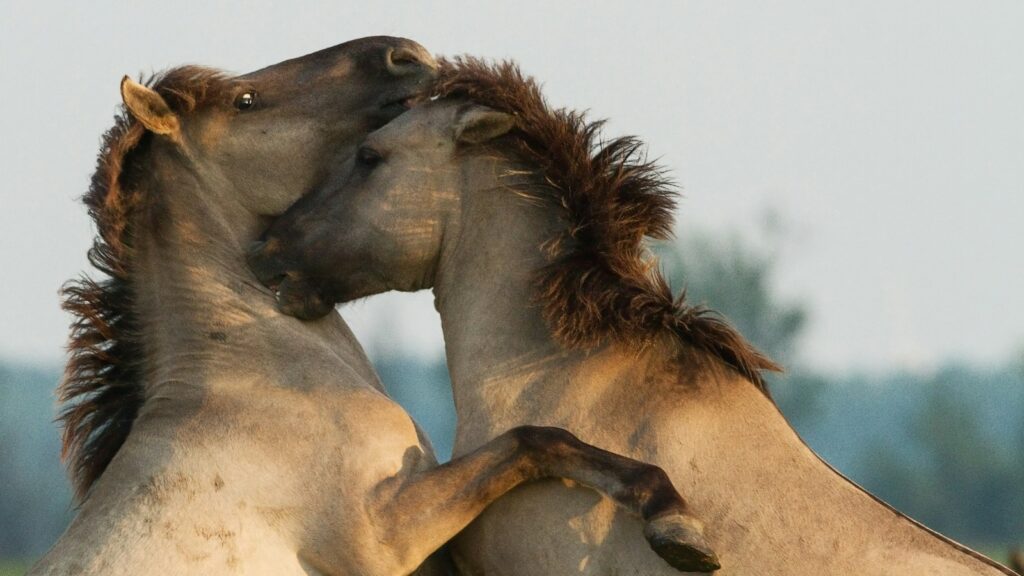
The mustang has transcended its biological classification to become a powerful cultural symbol deeply embedded in American identity and self-perception. These wild horses represent core American values of freedom, independence, and resilience against adversity—qualities that resonate with the nation’s frontier mythology and origin story. Their image appears throughout American art, literature, and popular culture, from classic western films to contemporary advertising, consistently representing untamed spirit and natural power. The famous opening sequence of the film “The Misfits” (1961) depicting wild horse capture crystallized the mustang’s symbolic importance to millions of viewers, portraying these animals as living embodiments of a disappearing wilderness. This cultural iconography extends beyond entertainment into political symbolism, with the mustang frequently invoked in debates about western land use, conservation, and American heritage, demonstrating how thoroughly these animals have become interwoven with national identity and collective imagination.
Threats to Wild Mustang Populations
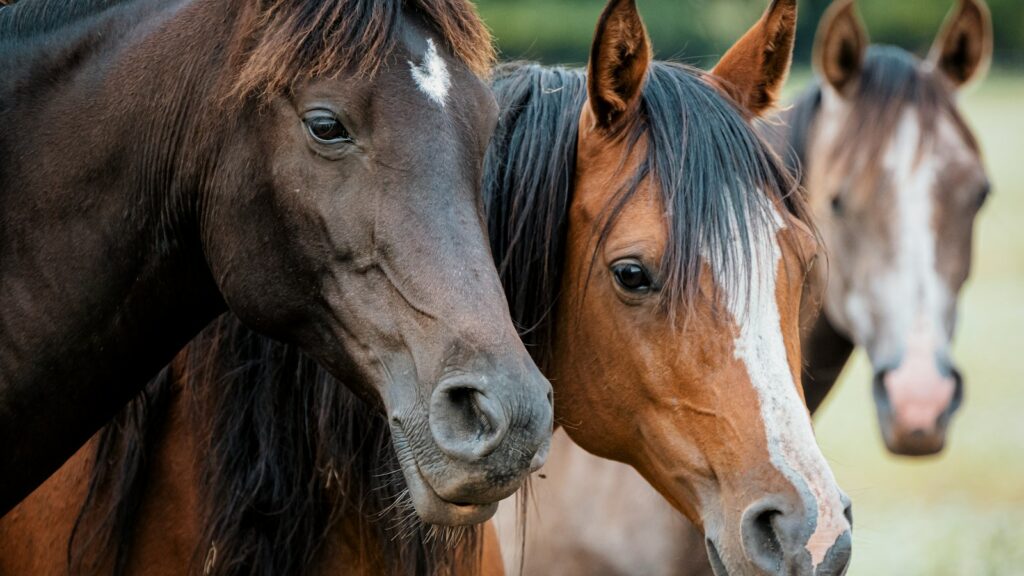
Despite their legendary resilience, wild mustang populations face numerous contemporary challenges threatening their existence on public lands. Habitat fragmentation from development, mining operations, and expanded human settlement continues to reduce the open range available to wild herds, forcing them into increasingly isolated pockets. Competition with livestock for grazing resources creates political and economic conflicts, as ranchers utilizing public lands for cattle often view mustangs as competitors for limited vegetation. Climate change impacts, including extended droughts across the West, further stress water resources and forage availability critical to mustang survival. Perhaps most contentiously, population management practices by federal agencies including helicopter roundups and fertility control programs generate intense debate among conservationists, ranchers, and wild horse advocates, creating complex ethical dilemmas about how these animals should exist in a rapidly changing western landscape where truly wild spaces continue to diminish.
Federal Protection and the Wild Free-Roaming Horses and Burros Act

The legal status and protection of American mustangs underwent a dramatic transformation with the passage of the Wild Free-Roaming Horses and Burros Act of 1971, landmark legislation that recognized these animals as “living symbols of the historic and pioneer spirit of the West.” This federal law, championed by “Wild Horse Annie” (Velma Johnston) after years of grassroots activism, prohibited the capture, branding, harassment, or killing of wild horses on public lands. The Act designated the Bureau of Land Management and U.S. Forest Service as the managing agencies responsible for protecting these animals while maintaining ecological balance on rangelands. Under this framework, wild horses received unprecedented legal protection after decades of largely unregulated capture and slaughter that had reduced populations from an estimated two million in the late 1800s to fewer than 20,000 by 1971. This legislation represents one of America’s earliest wildlife protection laws focused on non-game species, highlighting the mustang’s unique position in America’s conservation consciousness and legal framework.
Modern Management Challenges and Controversies

Contemporary management of wild mustang populations represents one of America’s most contentious wildlife issues, balancing ecological concerns with cultural values and animal welfare considerations. The Bureau of Land Management establishes “appropriate management levels” (AMLs) for each herd management area, but critics argue these figures often favor livestock interests over wild horse preservation. Roundups using helicopters to capture “excess” horses generate intense controversy, with advocates citing injury risks and family bond disruption while managers point to ecosystem damage from overpopulation. Over 50,000 captured mustangs now live in government holding facilities, creating both financial burdens (exceeding $80 million annually) and ethical questions about long-term care. Alternative management approaches, including fertility control vaccines like PZP, offer potential solutions but face implementation challenges across vast landscapes with elusive animals. These complex tensions reflect deeper societal conflicts about the proper relationship between humans, animals, and natural resources in the modern American West, with mustangs standing at the center of these philosophical and practical debates.
Mustang Adoption Programs and Domestication
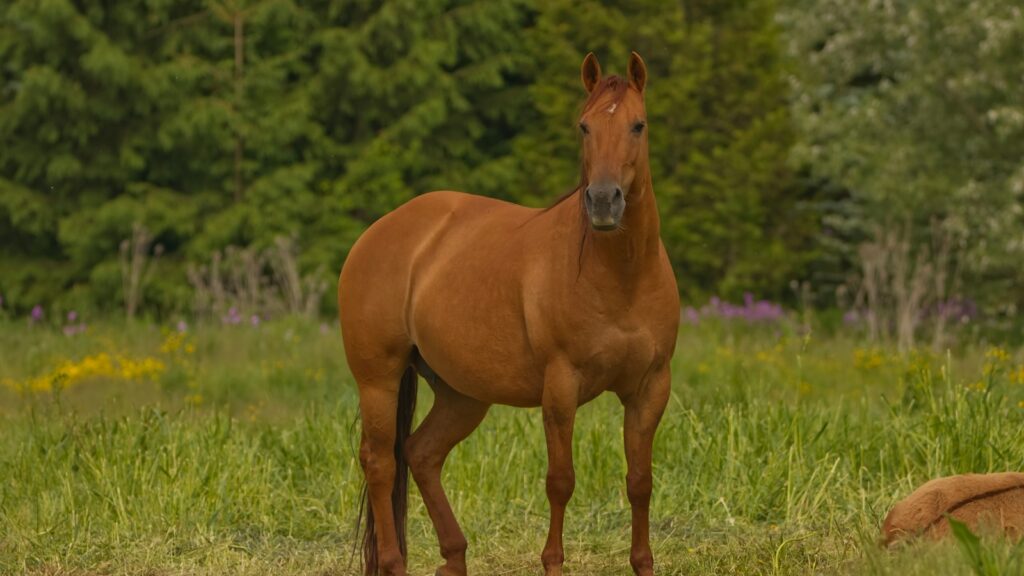
The Mustang Adoption Program, established by the Bureau of Land Management, represents an innovative approach to managing wild horse populations while preserving these animals’ genetic legacy. Through this initiative, thousands of captured mustangs transition from federal holding facilities to private ownership each year, providing an alternative to long-term government care. Adopters receive horses that have undergone basic health examinations, often with minimal gentling, and must demonstrate adequate facilities and knowledge before taking ownership. The renowned Extreme Mustang Makeover competitions showcase the remarkable adaptability of these horses, challenging trainers to transform completely wild mustangs into trained mounts in just 100 days. Many adopted mustangs develop into exceptional trail horses, working ranch mounts, and even competition animals, demonstrating the versatile capabilities hidden beneath their wild exterior. This partnership between government agencies, private citizens, and the horses themselves creates a unique conservation model where cultural heritage preservation intersects with practical population management and individual animal welfare.
Mustangs in Art, Literature and Film

Mustangs have galloped through American cultural expressions for generations, their wild spirit captured in countless artistic mediums that collectively shape public perception and appreciation. Frederic Remington’s dynamic paintings and bronze sculptures from the late 19th century portrayed these horses with remarkable anatomical accuracy while capturing their explosive movement and energy. Literary works including Marguerite Henry’s “Mustang: Wild Spirit of the West” introduced generations of young readers to wild horse conservation through the story of Nevada advocate Velma Johnston. On screen, films ranging from “The Misfits” (1961) to “Running Free” (2000) and documentaries like “American Mustang” (2013) have portrayed these animals with varying degrees of romanticism and realism, consistently emphasizing their freedom and vulnerability. These artistic depictions collectively reinforce the mustang’s cultural significance, transforming biological organisms into powerful metaphors that resonate deeply with American audiences regardless of their personal experience with actual horses or western landscapes.
The Future of Wild Mustangs in America

The path forward for America’s wild mustangs remains uncertain, balancing precariously between preservation aspirations and the practical challenges of modern land management. Scientific approaches, including improved population modeling, genetic diversity assessment, and more sophisticated fertility control methods offer promising management tools that could reduce reliance on controversial roundups. Advocacy organizations continue to work to secure additional protected habitat and wildlife corridors that would allow mustangs greater natural movement while minimizing conflicts with human land uses. The growing recognition of eco-tourism potential surrounding wild horse viewing creates economic incentives for local communities to support mustang preservation as valuable wildlife attractions rather than resource competitors. Perhaps most fundamentally, evolving cultural conversations about American identity, western heritage, and environmental ethics will likely determine whether future generations witness free-roaming mustangs across public lands or merely encounter their legacy in museums and historical accounts. The mustang’s future may ultimately depend on society’s willingness to accommodate wilderness in an increasingly developed landscape—a question that extends far beyond horses to humanity’s broader relationship with nature.
Conclusion

The American mustang represents far more than just a horse running wild across western landscapes—it embodies a complex intersection of natural history, cultural evolution, and national identity. From their Spanish origins to their current status as federally protected icons, these animals have witnessed and participated in the dramatic transformation of the American West. Their resilience in harsh environments mirrors the pioneering spirit celebrated in American mythology, while contemporary debates about their management reflect deeper societal questions about conservation priorities and land use ethics. As living links to a more untamed past, mustangs continue to captivate our collective imagination, challenging us to preserve not just the animals themselves but the freedom and wildness they represent—qualities increasingly rare in our modern world yet persistently valuable to our cultural identity and environmental heritage.

